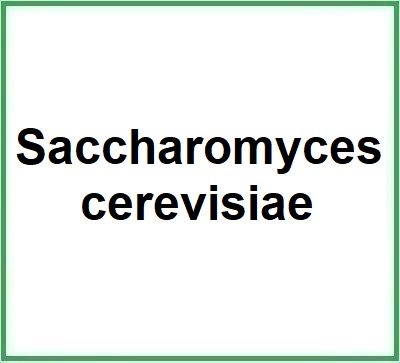Saccharomyces cerevisiae is normally a non-pathogenic microbe and is also known as as Saccharomyces var. boulardii, acts as a brewer's yeast or baker's yeast. Yeasts are evolved fungi of the Ascomycetes division classified in the class Saccharomycetes. It is a single-celled eukaryotic organism.
The name describes the structure of the molecule:
- "Saccharomyces" comes from Greek and means "sugar fungus". It refers to the genus of yeasts to which this species belongs.
- "cerevisiae" comes from Latin and means "of beer", pointing to the traditional use of this yeast in beer fermentation.
Description of raw materials used in production and their functions.
- Molasses or malt extracts. These are nutrient-rich sugar sources, which are required for the growth and fermentation of Saccharomyces cerevisiae.
- Water. Provides the medium for yeast growth.
- Salts and minerals. These include phosphate, ammonium, and trace minerals like magnesium and potassium, essential for the yeast's growth and reproduction.
Step-by-step summary of industrial chemical synthesis process.
- Medium preparation. Water, molasses or malt extracts, and salts are mixed to form a culture medium.
- Inoculation. A mother culture of Saccharomyces cerevisiae is added to the prepared culture medium.
- Fermentation. The yeast grows and reproduces, converting the sugars present in the molasses or malt extract into alcohol and carbon dioxide.
- Harvesting. Once the desired level of growth is achieved, the yeast is harvested through processes like centrifugation.
- Drying. The harvested yeast might be dried to produce powdered yeast or may be used in liquid form, depending on the intended application.
Cosmetics
Saccharomyces cerevisiae is used in the form of ferment extract in cosmetic products such as:
Skin conditioning agent. It is the mainstay of topical skin treatment as it has the function of restoring, increasing or improving skin tolerance to external factors, including melanocyte tolerance. The most important function of the conditioning agent is to prevent skin dehydration, but the subject is rather complex and involves emollients and humectants that can be added in the formulation.
Medical
Human monocytes stimulated by chitin from Saccharomyces cerevisiae lead to enhanced ability to eliminate a wide range of microorganisms, such as Candida albicans (a pathogen opportunistic fungus), Staphylococcus aureus (Gram-positive bacterium), or Escherichia coli (Gram-negative bacterium)(1).
Wines
Saccharomyces cerevisiae strains are used for vinification because of their ability to regulate the fermentation process, their tolerance to acid, anaerobic, acidic and high sugar content conditions (2).
Saccharomyces cerevisiae studies
References______________________________________________________
(1) Saccharomyces cerevisiae Induces Immune Enhancing and Shapes Gut Microbiota in Social Wasps. Meriggi N, Di Paola M, Vitali F, Rivero D, Cappa F, Turillazzi F, Gori A, Dapporto L, Beani L, Turillazzi S, Cavalieri D. Front Microbiol. 2019 Oct 15;10:2320. doi: 10.3389/fmicb.2019.02320.
(2) Effects of Saccharomyces cerevisiae in association with Torulaspora delbrueckii on the aroma and amino acids in longan wines. Sanoppa K, Huang TC, Wu MC. Food Sci Nutr. 2019 Aug 5;7(9):2817-2826. doi: 10.1002/fsn3.1076.
![]() Saccharomyces cerevisiae
Saccharomyces cerevisiae 

